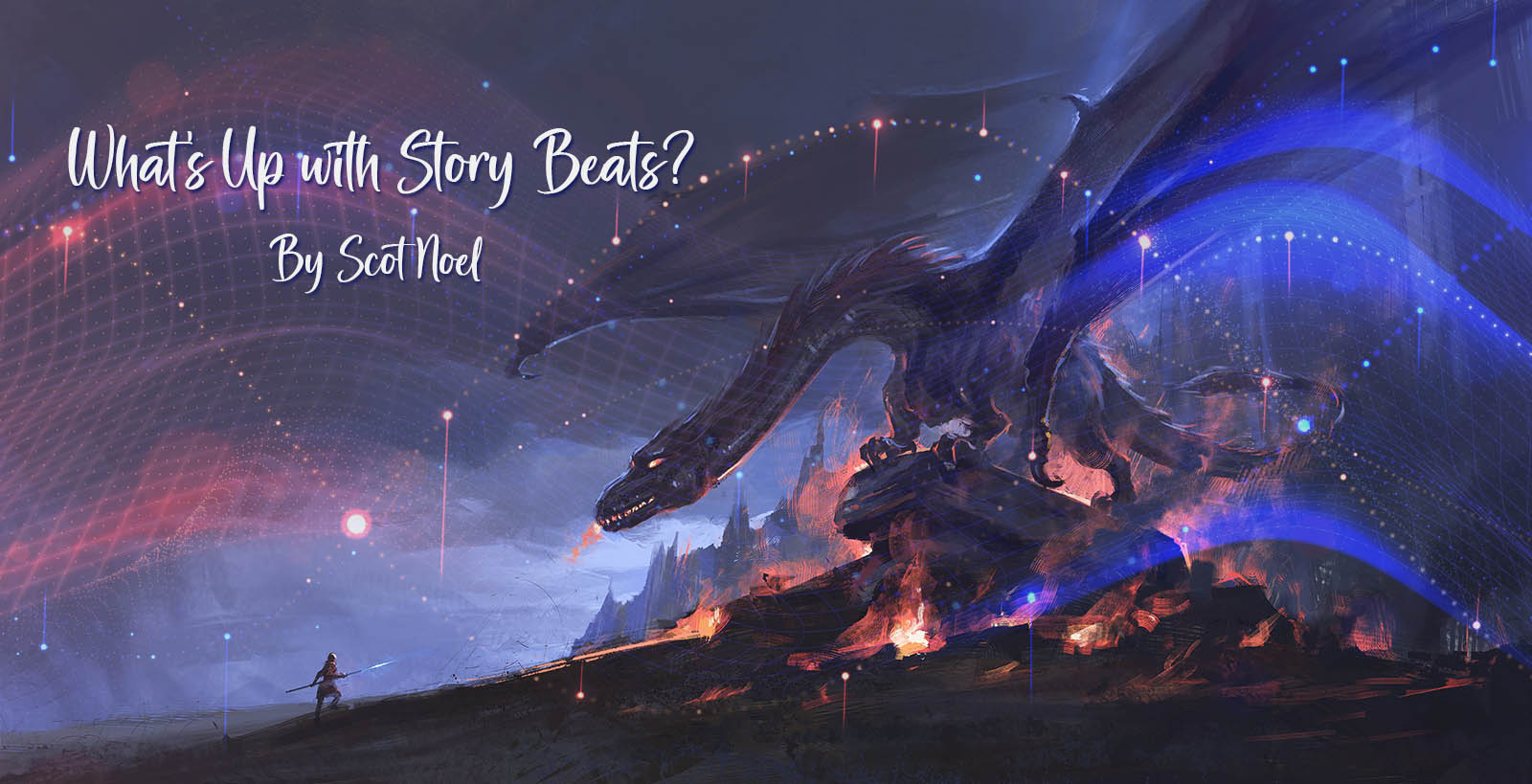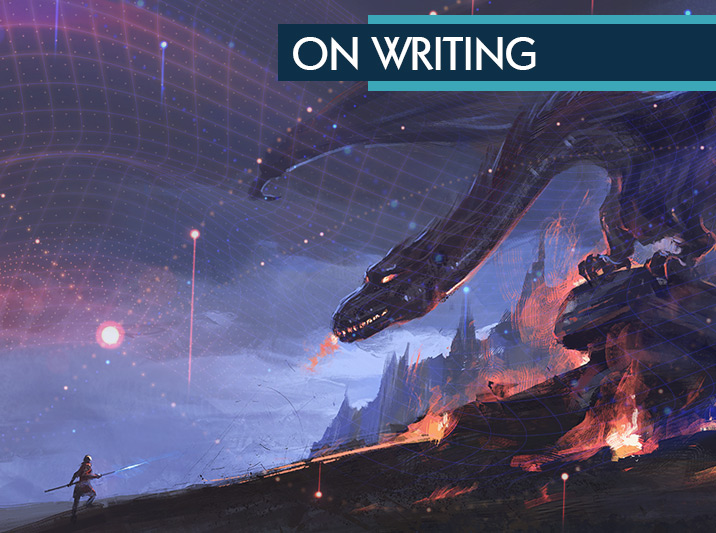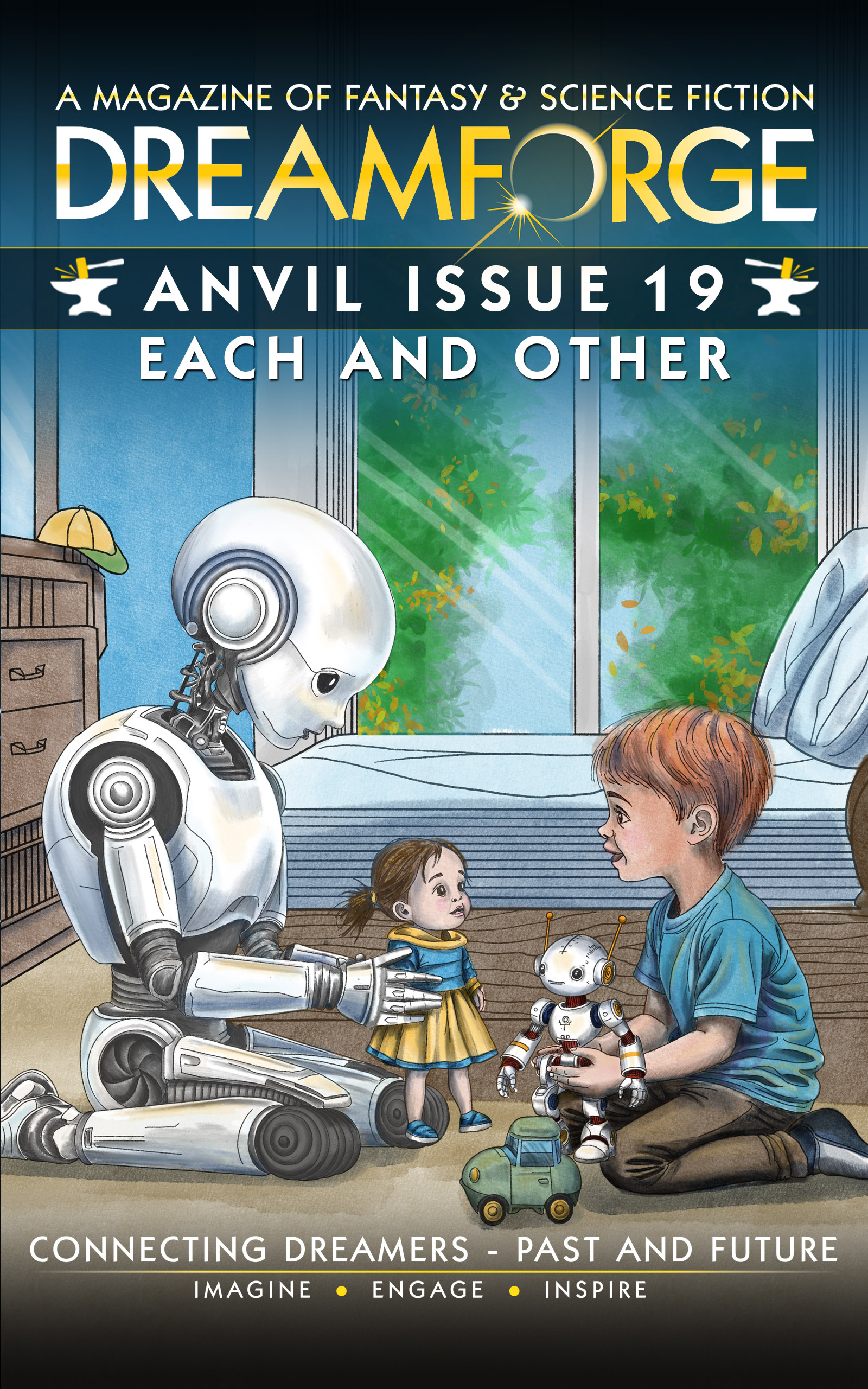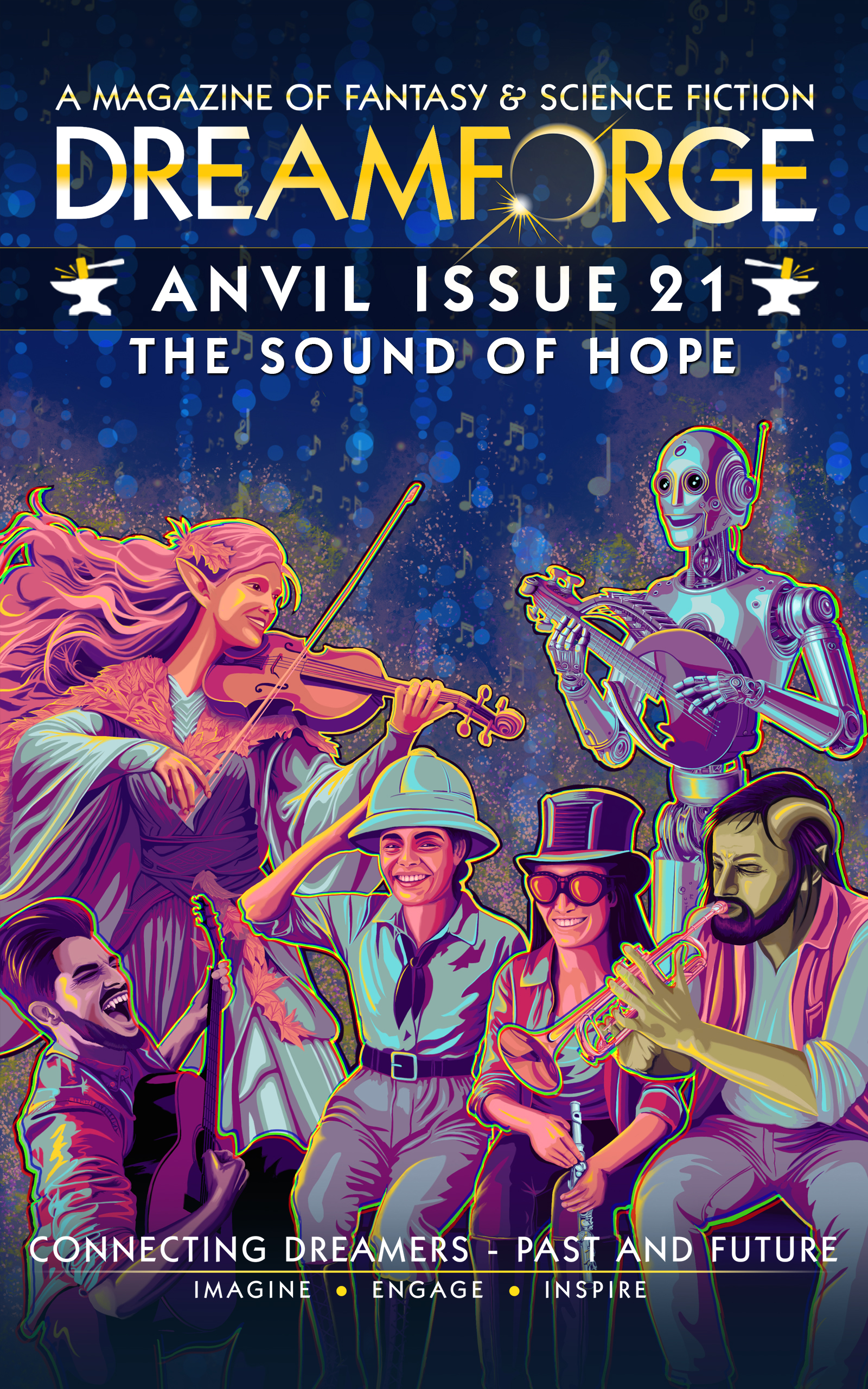
Until recently, I was not familiar with the idea of “story beats.” In fact, I’ve edited DreamForge Magazine for years without being familiar with this particular technique. Once I got into it, though, I saw the logic of it, because that’s been around much longer than the jargon associated with the phrase.
The modern idea seems to have started in Hollywood around the time of Jaws and Star Wars, you know— a defining moment like a shark attack or a Death Star explosion. It was developed over the years and seems to have solidified under the term “beats” with Robert McKee’s 1997 book Story, on the Substance, Structure, Style, and The Principles of Screenwriting.
It’s been moving into genre fiction writing too, so let’s take a look at “story beats,” those tiny building blocks that can shape your tale.
What Are Story Beats?
Story beats are the smallest units of your tale. Think of them as micro-interactions —often a sentence long— that reveal your world, characters, and events. Each beat pairs an input with an output. For example, a spaceship lands (input), and the crew gasps at a glowing alien ruin (output). These beats are the molecules of your story. They stack into scenes, scenes into arcs, and arcs into your full narrative.
This idea is as old at Aristotle’s Poetics (335 BCE), and as modern in adaptation as Robert McKee’s “Story” (1997 CE), although “input” and “output” are just tags I threw in to keep this article brief and to the point.
Beats drive change. They keep readers hooked by shifting the story subtly or dramatically. In short stories, where every word counts, beats ensure tight pacing and purpose.
Here’s a sci-fi example:
- Input: Rain pelts the hull of a derelict starship. Inside, Captain Zara scans a flickering holomap.
- Output: “This signal’s alive,” she whispers, eyes wide. “Something’s calling us.”
This beat sets up mystery, pulling readers deeper into your story.
Beats in Narrative: Turning Points That Propel
A narrative beat is a moment of change. It follows a mini-arc: an inciting incident sparks a complication, leading to a crisis, climax, and resolution. You should be used to hearing those ideas as related to whole story arcs. Now, we’re using them to define action at the molecular level— sentences and quotes.
Beats push your sci-fi or fantasy plot forward, delivering energy and meaning. They also help you trim fluff— where every line supports the story’s forward movement.
In 2015, Shawn Coyne published The Story Grid: What Good Editors Know. Coyne’s goal was to develop a tool to analyze stories and provide helpful editorial comments. Let’s take a look at how Coyne handles beats.
The Story Grid outlines three beat types:
- Active Build-Up Beats: Characters connect and grow. A cyborg monk shares wisdom with a young rebel, deepening their bond.
- Reactive Break-Down Beats: Characters falter under pressure. The rebel’s trust shatters when the monk’s circuits glitch, revealing a lie.
- Binding Beats: These glue your story together. They include:
- World-Building Beats: “The twin suns scorched the desert, their light bending through crystal dunes.”
-
- Camera-Shifting Beats: The focus swings to a cloaked figure watching from a ridge.
-
- Transition Beats: The rebel pauses, her hand brushing the monk’s sparking arm, then steps back.
Beats in Dialogue: Rhythm and Depth
Dialogue beats speed up scenes and add flavor. They’re snippets of talk, often paired with action or emotion beats to keep readers engaged. Pauses matter too— dialogue tags mimic natural speech, emphasizing key lines.
Picture this fantasy exchange:
- “We must reclaim the dragon’s hoard,” Kael says, gripping his staff.
- “Or die trying,” Lila snaps, her eyes flashing.
The tags —“gripping his staff” and “her eyes flashing”— create pauses. They highlight tension and character. Break a dialogue run with an action beat, like Kael slamming the staff down, to shift the pace.
In short stories, where space is tight, dialogue beats can do some heavy lifting. They can reveal personality and stakes fast, giving you some magic sauce to keep your tales vivid and engaging.
Sci-Fi and Fantasy Beat Examples
As we’ve seen, beats follow the five commandments of storytelling —inciting incident, complication, crisis, climax, resolution— but boiled down to structure each scene.
Let’s craft some example beats for a SF and Fantasy, starting with “The Beacon’s Pulse,” set on a ruined planet:
- Input: Rain hammers the cracked dome of a lost outpost. Inside, Engineer Vex studies a pulsing beacon.
- Output: “It’s not random,” she mutters, tracing the signal. “It’s a countdown.”
- Active Build-Up: Vex radios her android partner, Dex, to decode it.
- Reactive Break-Down: Dex’s circuits fry under the signal’s intensity, sparking panic.
- World-Building: Dusty consoles hum, relics of a vanished colony.
- Camera-Shifting: The scene jumps to a distant ship picking up the same pulse.
- Transition: Vex steadies her breath, realizing the beacon’s warning.
Now, a fantasy twist, “The Last Ember”:
- Input: Wind howls through a crumbling tower. Rune-keeper Torin finds a glowing coal.
- Output: “The fire god’s last gift,” he breathes, hands trembling.
- Dialogue Beat: “We can reignite the hearth,” he says. “Or doom us all,” his apprentice warns, stepping back.
Beat patterns aren’t rigid. They’re tools to spot gaps or sharpen pacing. In short stories, beats ensure flow. They highlight where your tech or magic system is driving the tale— or stalling it. Analyzing beats is one way to cut the fat, leaving behind a lean and compelling narrative.
Let’s Get to Work
As I said at the beginning, until recently, I’ve been unfamiliar with the technique of writing with “story beats.” But now that I know the basics —even though learning new things at my age makes my head hurt— I feel like I have a new tool in my kit to approach short story writing.
For myself, I’m not going to worry about using it in every scene and sentence to start; instead, my goal is to be aware of beats and take a closer look at my scenes, especially when they seem to drag. To start, I’ll use it as a repair tool to fix up some problems. I know it will take time to build up my “beat muscles,” but I love to learn, and I hope you do too.
Let’s get our beats on and see what magic we can bring to our stories.












